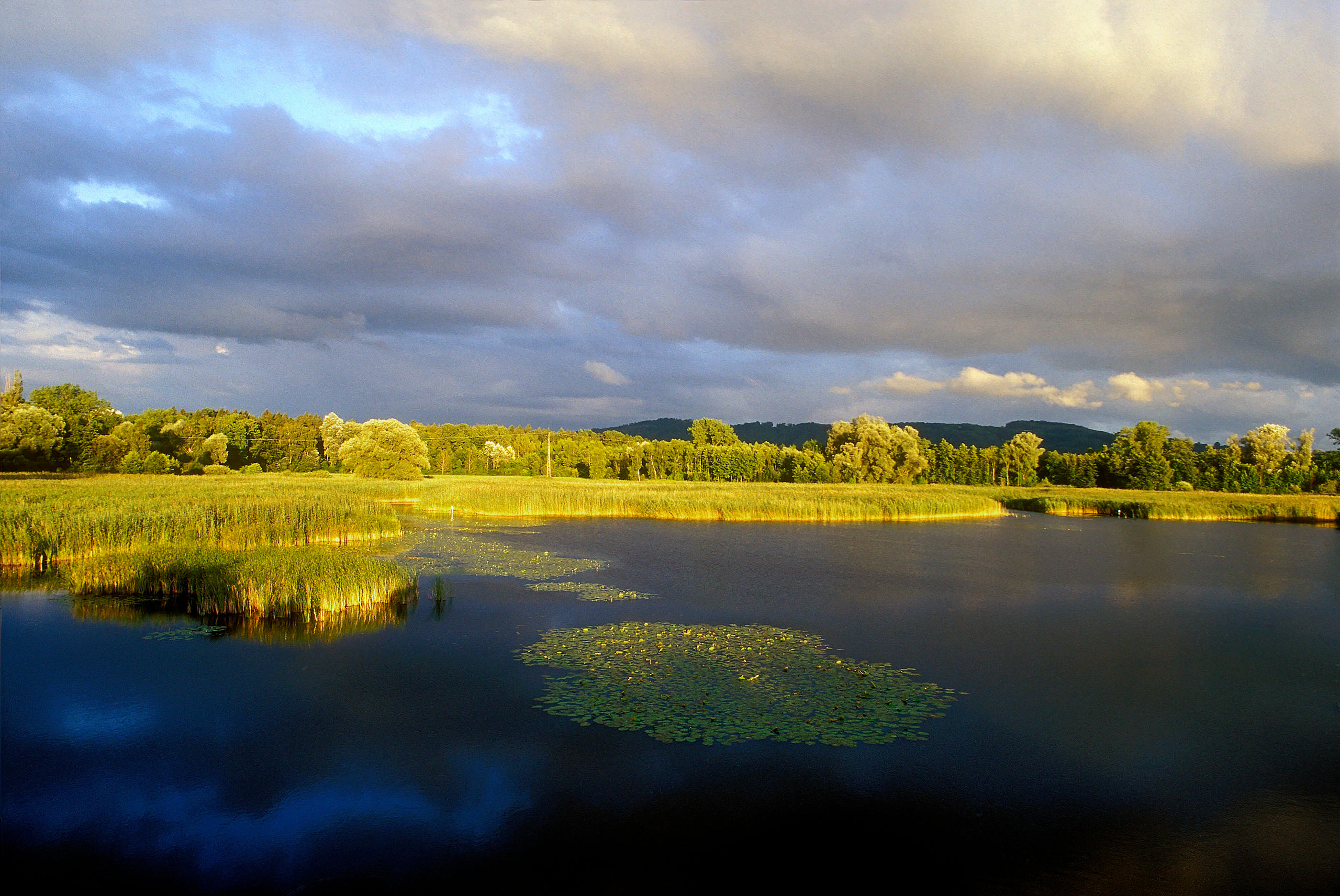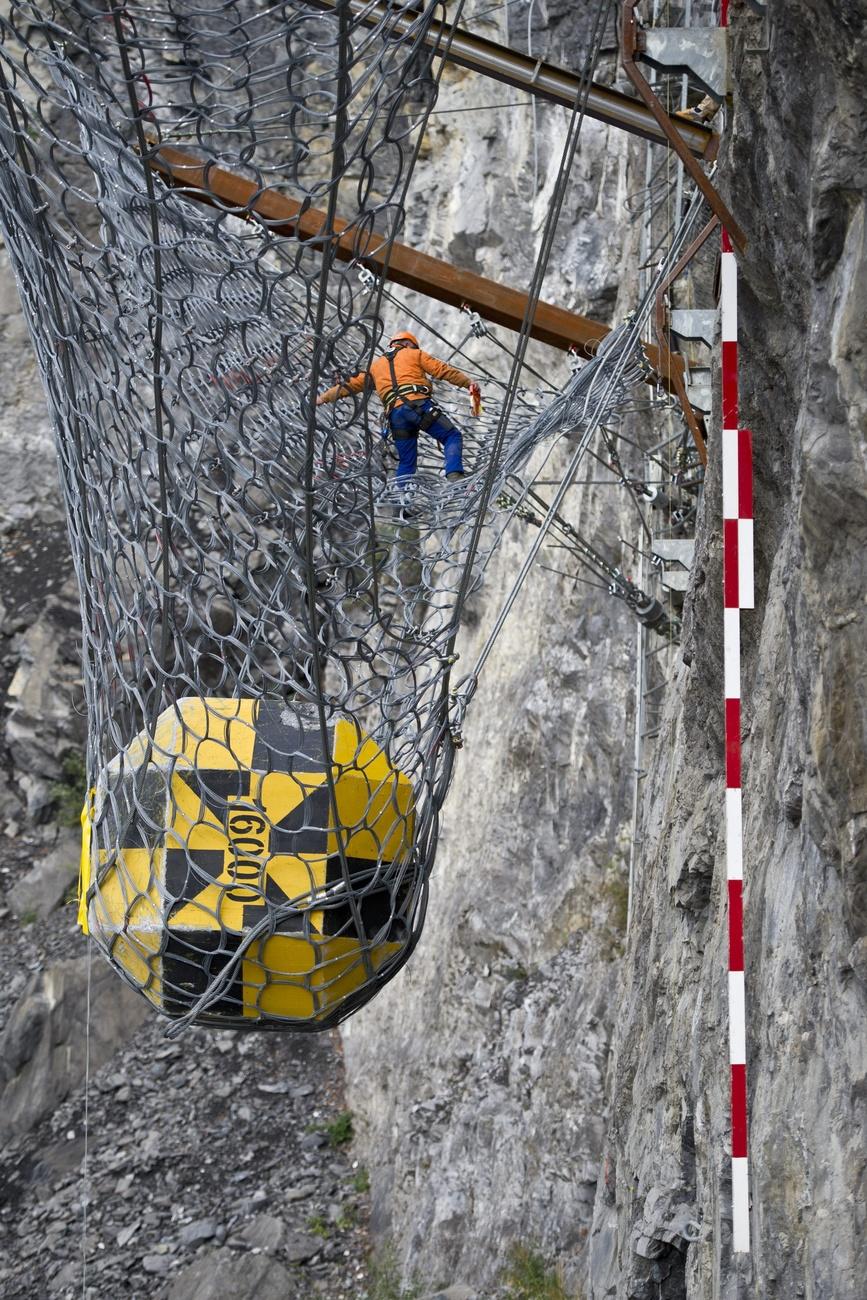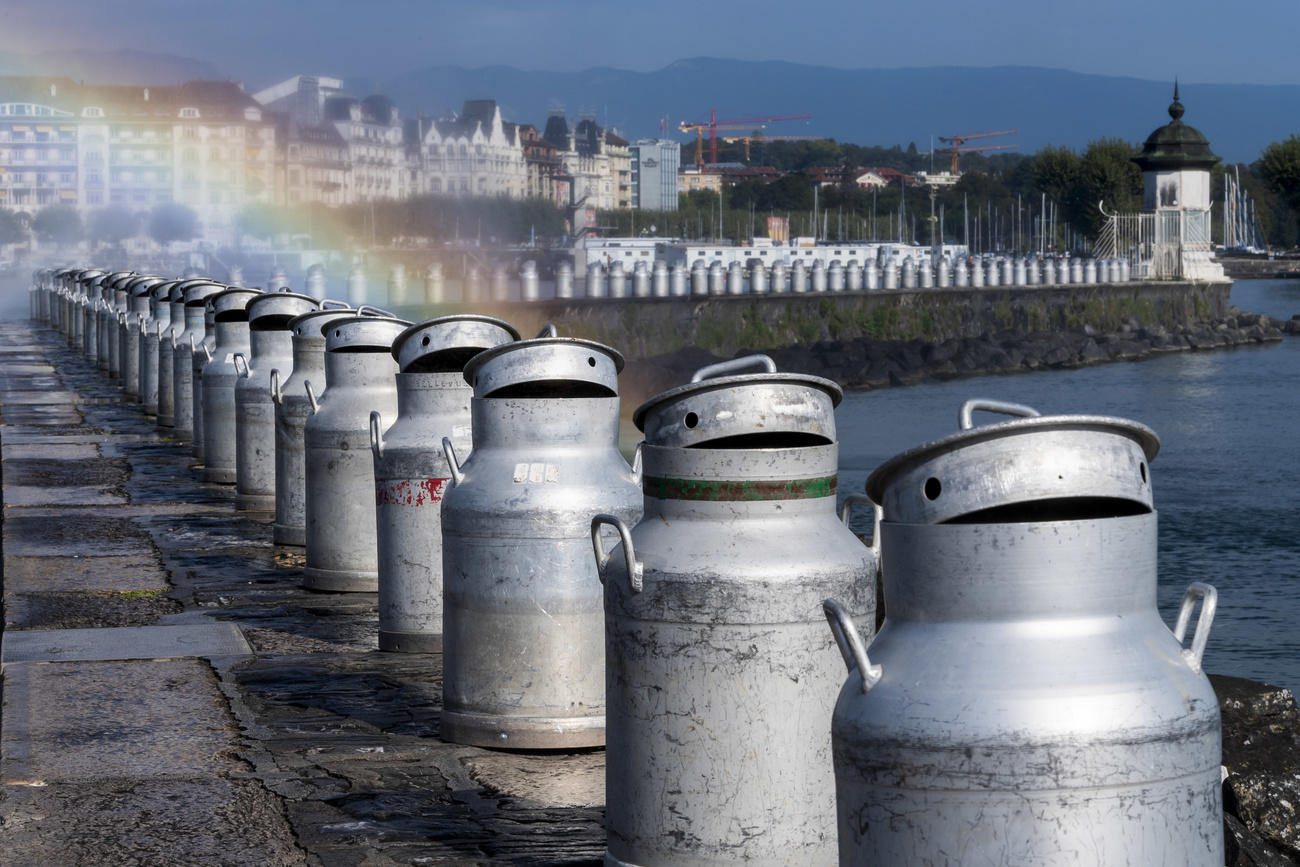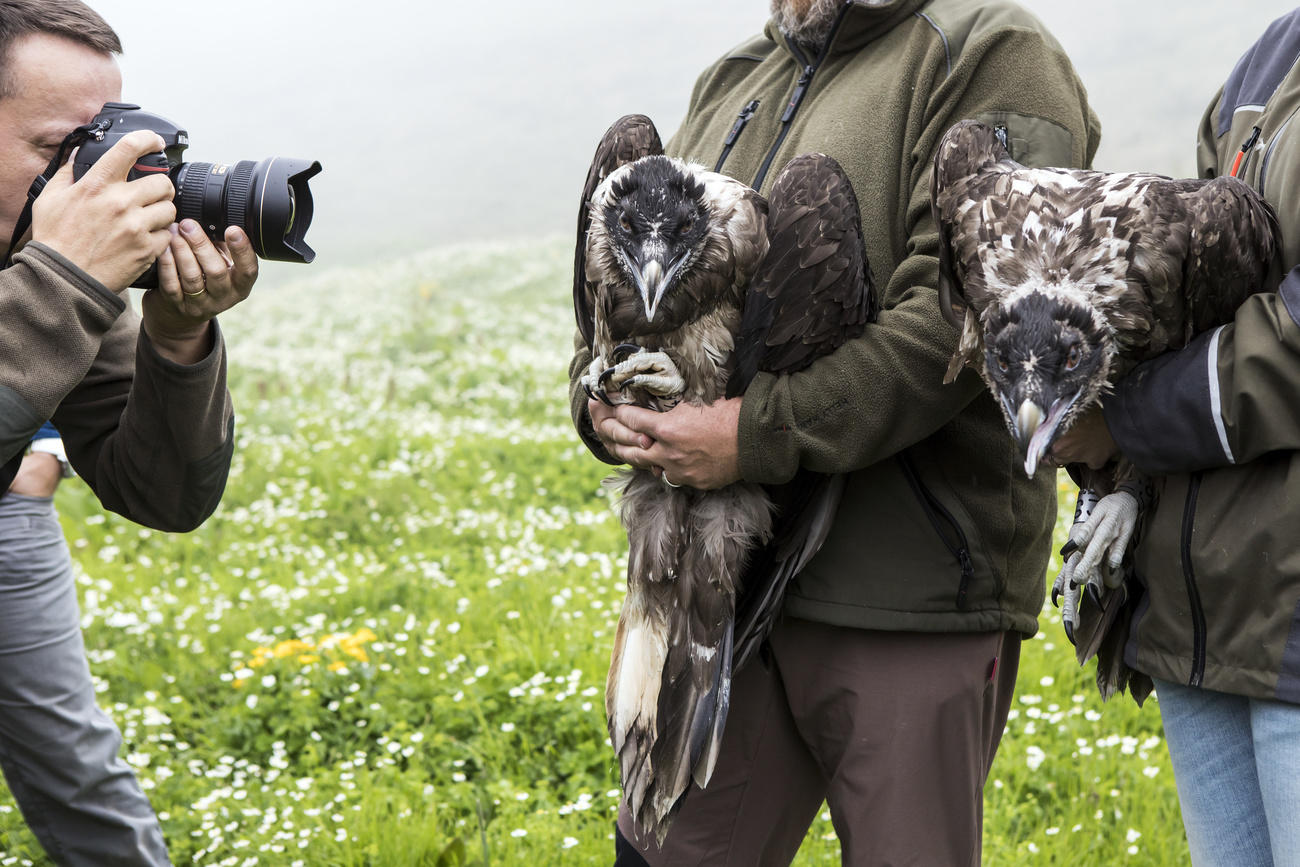
Now for some good news about biodiversity
Hiking in the southeastern Swiss Alps earlier this summer, I sighted a bearded vulture. It was unexpected. But there it was, circling overhead, its near three-metre wingspan lifting it on the thermals.
I think back to that moment and how the majestic bird, once hunted into extinction in the Alps, has rebounded. It is reason to be hopeful for the biodiversity of our fragile planet.
An exemplary international effort involving environmental organisations and the Frankfurt zoo launched a reintroduction programme for the bearded vulture little more than 30 years ago.
It took 11 years before the first chicks hatched in the wild, but this summer, the foundationExternal link that leads the conservation charge in Switzerland, said there are now around 300 in the Alps, a number that, in theory, is sufficient for the population to maintain itself.
Summer reading
As part of my summer reading, I also came across a biodiversity action plan in canton Bern that will be a first in Switzerland. The idea is to protect flora and fauna by taking advantage of field surveysExternal link carried out across the country over the past couple of decades.
If the measures are approved this autumn, inventories from the surveys will feed into an online GIS (geographic information system) map and enable local authorities to zoom in on building lots to see whether construction will have negative ecological consequences, such as interfering with a wildlife corridor or cutting through a moor. If they don’t act, the GIS will be a tool to empower local citizens concerned about biodiversity loss to exercise their political rights and lodge complaints to block or put on hold such projects.
Switzerland is no poster child when it comes to biodiversity. Since 1990, the number of birds on agricultural lands has declined by 60%, and Switzerland is believed to have the highest percentage of endangered species in western Europe.
All this gives urgency to canton Bern’s action plan. It highlights how even in just one region of a small country, there are large differences.

An average square kilometre in the canton has 262 plant species, but the steeper the square metre, the richer the biodiversity. North-facing mountain slopes in the Bernese Alps have on average 70 more kinds of plants than agricultural zones in the lowlands. A mountain terrain and climate unsuitable for intensive farming means there are more areas with undisturbed wetlands and forests, or – in the case of alpine farming – that are managed to make allowances for biodiversity.
Summer reading – Part II
I wrote at the start of this summer about the dangers of travelling in the mountains, due to the risk of avalanches and rockslides. In mid-August the results of groundbreaking research were published that confirm how unstable rock on mountainsides can be.
By placing wireless sensors on the iconic Matterhorn, scientists from the Federal Institute of Technology, Zurich, and other institutions were able to measure over a ten-year period the formation of cracks beneath the surface that previously were not possible to detect.
The lead researcher of the PermaSense projectExternal link claimed the information collected “constitutes the longest, densest and most diverse data record in the history of alpine permafrost research worldwide.”
That’s good news since it aids our understanding of processes that could lead to the destabilization of the rock, important as ice in permafrost – the glue that holds rocks in place – is melting due to global warming. And since the data is delivered in near real time, it could inform local authorities before disaster strikes so they can close roads and paths. Only two years ago, a massive rockfall in the southeastern Swiss Alps killed several people, and damaged parts of a village.
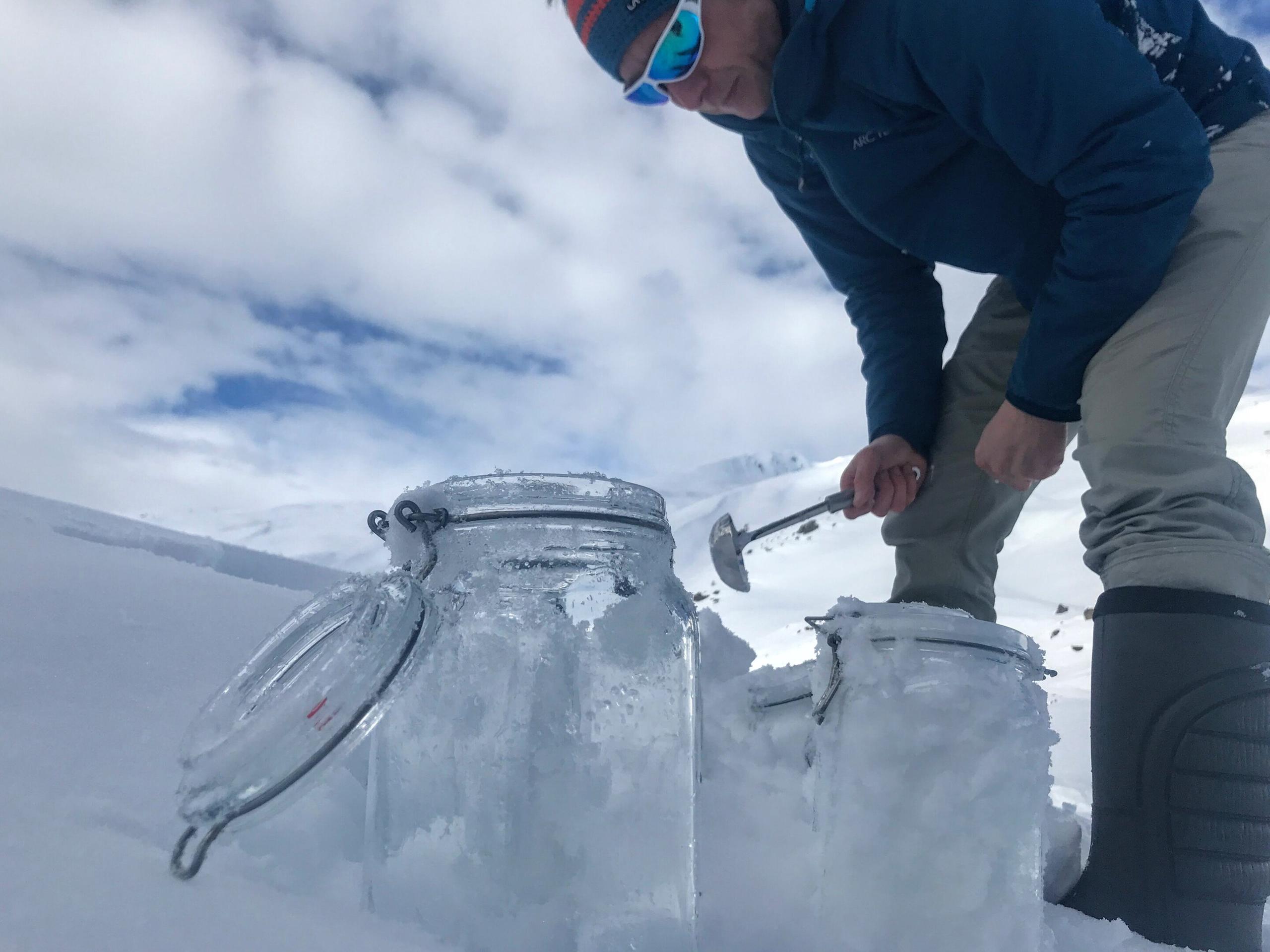
Summer reading – Part III
Plastic is in our rivers, lakes and oceans, and it’s also in our air. In the same week we listened to the beat of the Matterhorn’s rocky heart, scientists announced that they had found high concentrations of microplastic in snow that had fallen on the Alps as well as on Arctic ice floes – as far from civilization as one can get.
Conducted by researchers from Switzerland’s Institute for Snow and Avalanche Research and Germany’s Alfred Wegener Institute, the study foundExternal link the highest concentrations in southern Germany – 154,000 particles per litre, whereas snow in the Arctic had up to 14,400 per litre.
So where does the plastic come from? Often it is nitrate rubber from gaskets and hoses, as well as plastic from paints used to coat the surfaces of everything from buildings and ships to cars. Snow, the lead researcher said, is incredibly efficient at washing plastic out of the air.
The findings do more damage to plastic’s reputation – hopefully before it does more damage to our environment.
Have you come across cutting-edge research in the Alps that I may not have seen? Let me know: dale.bechtel@swissinfo.ch
I’ll be out of the office and in the mountains for a couple of weeks, but I look forward to writing you soon, and answering any questions you may have.
You can also follow me on Twitter @dalebechtelExternal link

In compliance with the JTI standards
More: SWI swissinfo.ch certified by the Journalism Trust Initiative









